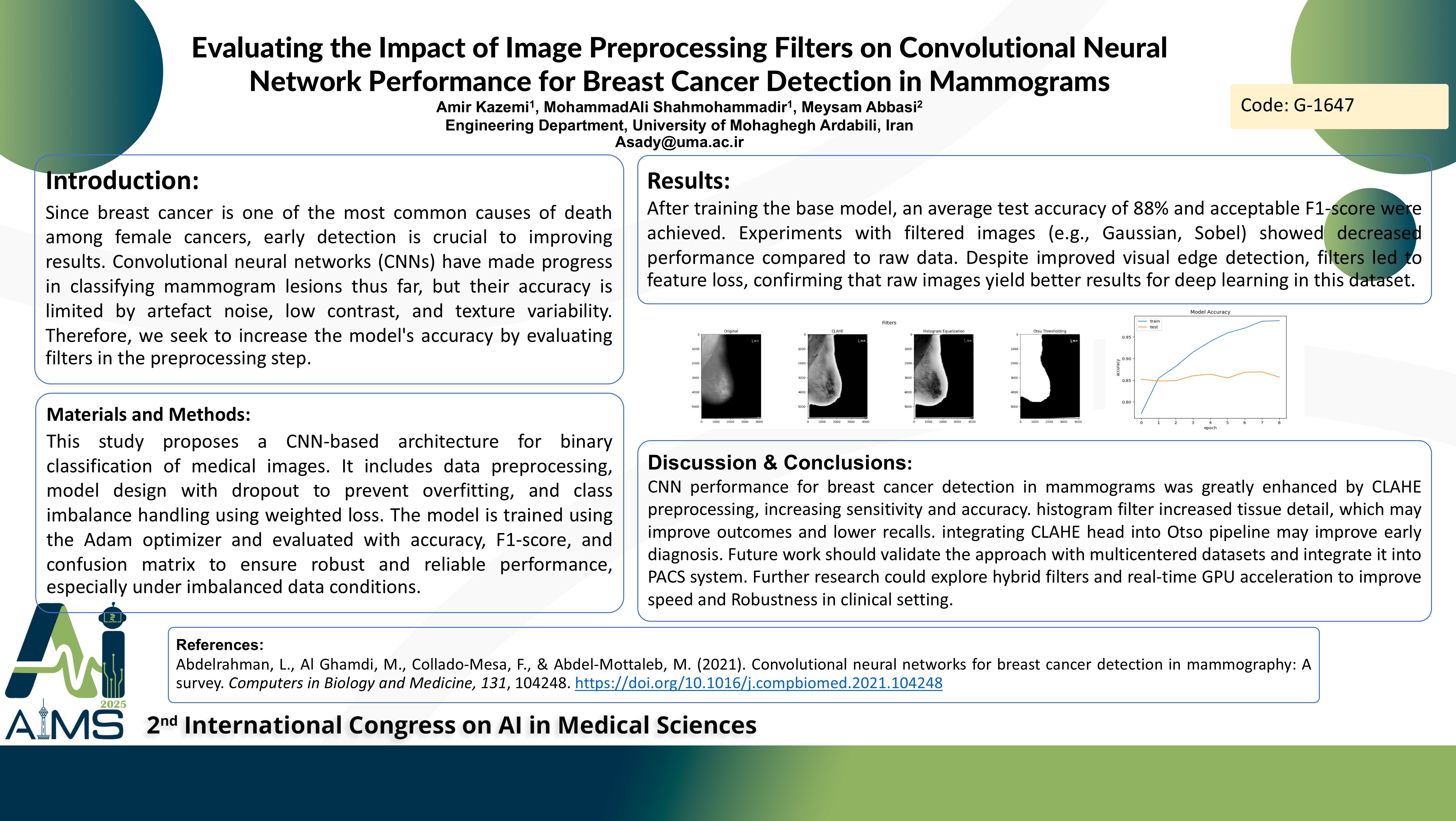Evaluating the Impact of Image Preprocessing Filters on Convolutional Neural Network Performance for Breast Cancer Detection in Mammograms
Code: G-1647
Authors: Amirmohammad Kazemi *, MohammadAli Shahmohammadi ℗, Meysam Abasi
Schedule: Not Scheduled!
Tag: Biomedical Signal Processing
Download: Download Poster
Abstract:
Abstract
Background and aims: In today's world, breast cancer remains the leading cause of mortality among women, making early detection crucial for improving treatment outcomes and survival rates. Convolutional Neural Networks (CNNs) have significantly advanced the detection of malignant tumors in mammograms by automating the classification process. However, the quality of mammographic images often poses a challenge, as noise, low contrast, and other artifacts reduce the effectiveness of CNN-based models. To address these limitations, preprocessing filters can be applied to enhance image quality and improve detection performance. In this study, we aimed to determine which preprocessing filter—Gaussian Blur, Sobel Edge Detection, Contrast Limited Adaptive Histogram Equalization (CLAHE), or Gabor Filter—yields the highest performance in improving CNN accuracy for breast cancer detection. Methods: We systematically evaluated the impact of four preprocessing techniques on mammogram datasets. Gaussian Blur was used for noise reduction, Sobel Edge Detection for edge enhancement, CLAHE for contrast improvement, and Gabor Filter for texture analysis. A CNN model was trained and tested on each filtered dataset, and the results were compared against a baseline CNN trained on unprocessed images to quantify improvements in classification accuracy and robustness. Results: Our findings highlight the preprocessing filter that provides the most substantial improvement in CNN performance for detecting breast cancer in mammograms, showcasing its potential for clinical applications. Conclusion: Identifying the optimal preprocessing technique enhances CNN-based breast cancer detection, leading to greater diagnostic precision, improved patient outcomes, and advancements in medical imaging technology.
Keywords
Image Preprocessing, Diagnostic Accuracy, Medical Imaging
